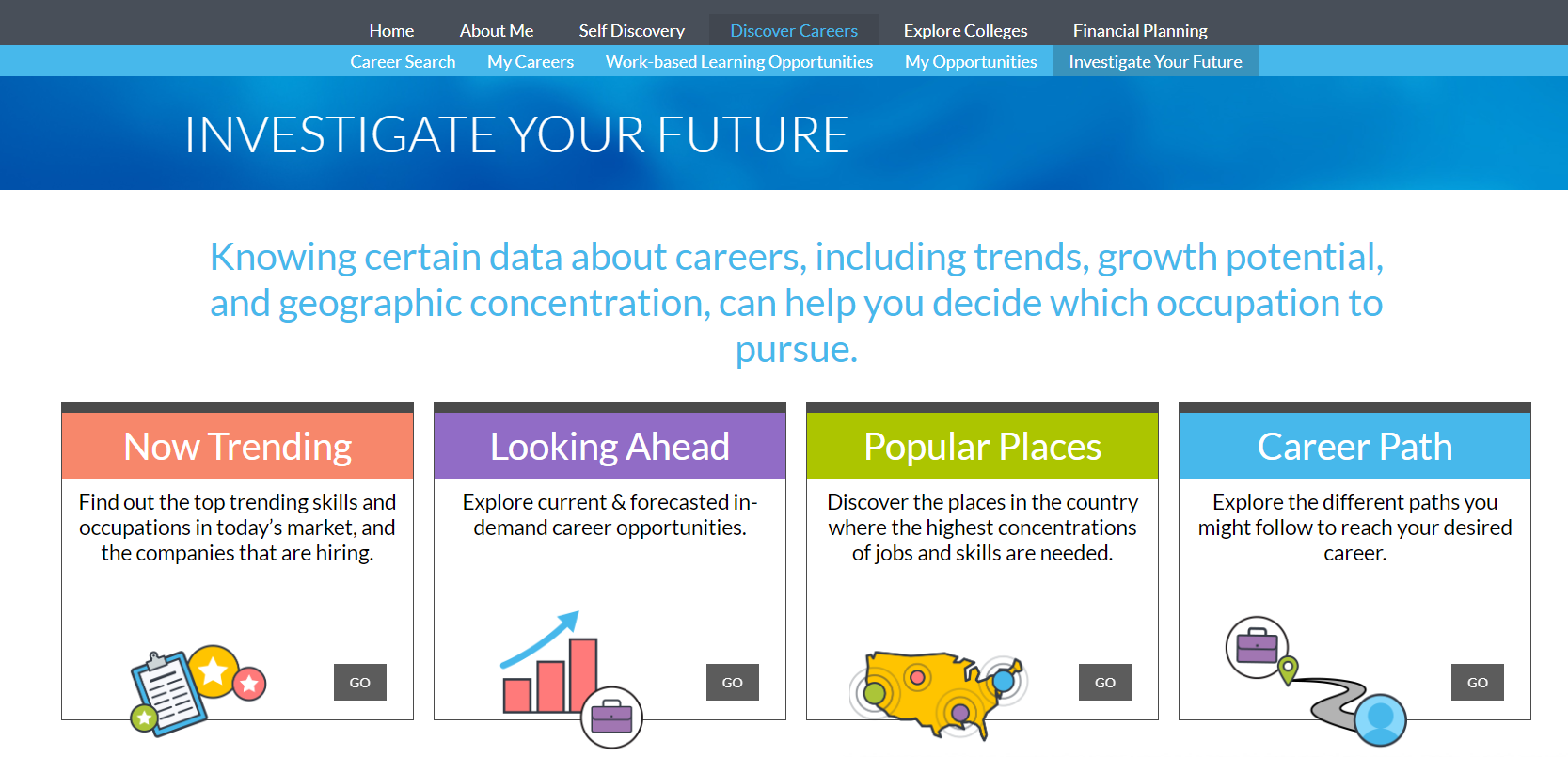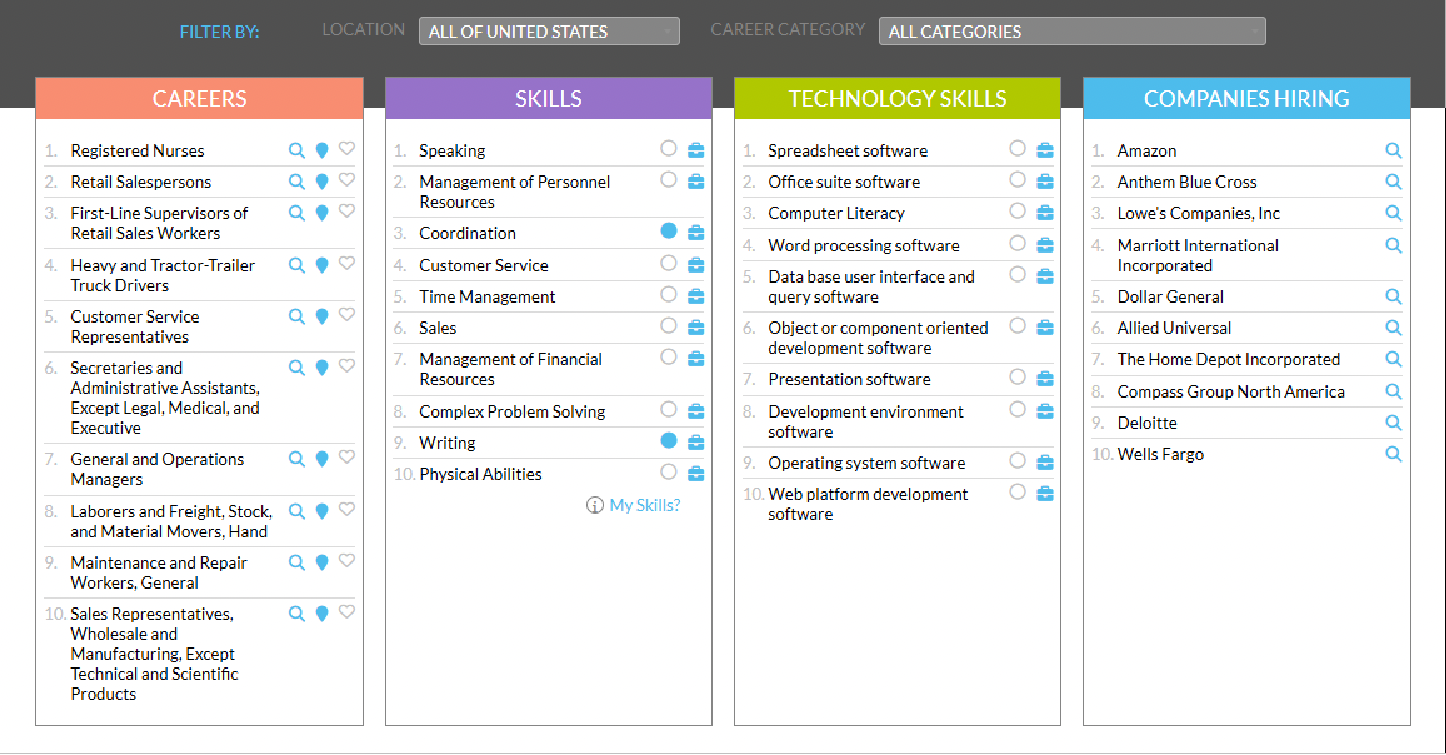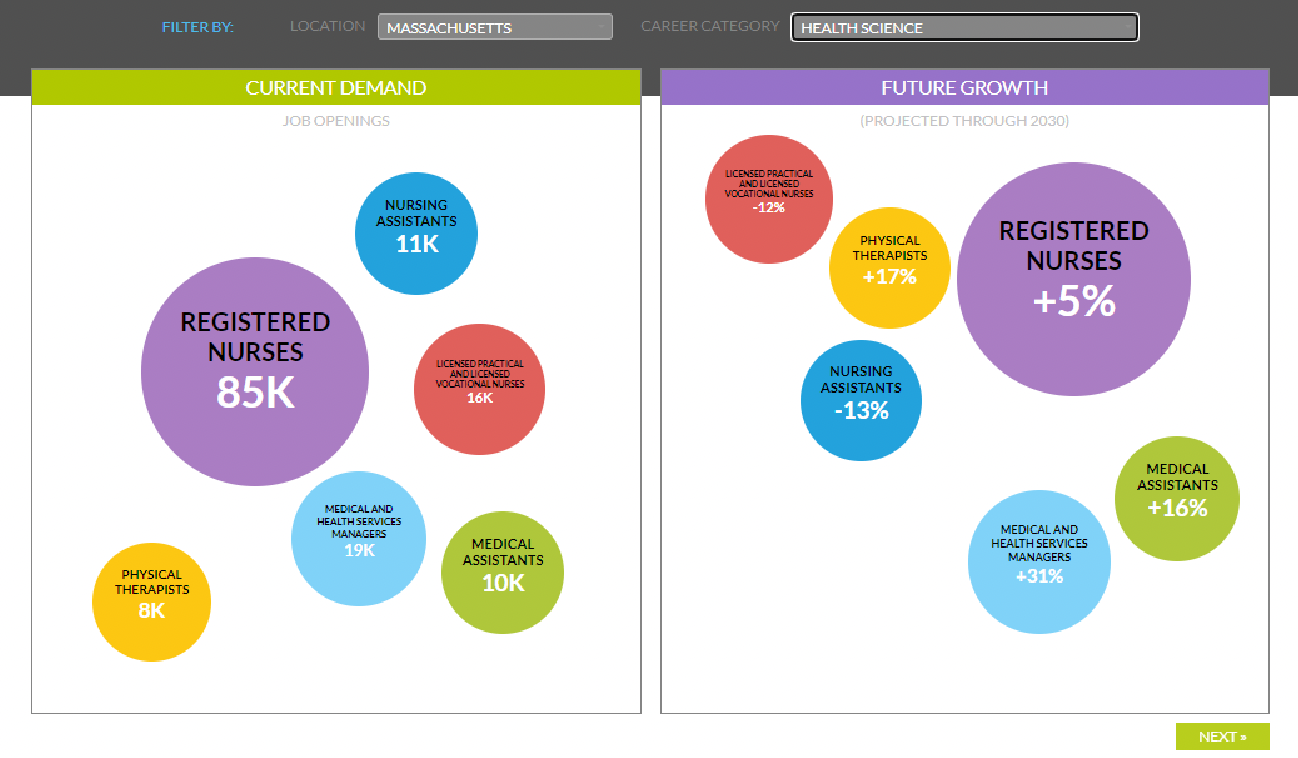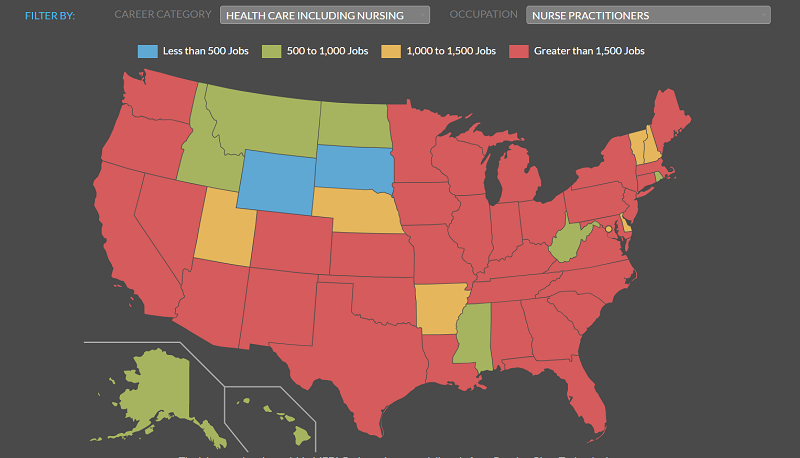MEFA Pathway’s Investigate Your Future section within the Discover Careers tab includes four features that share information about the current job market and career paths to help you explore different careers. You can learn about top trending skills and occupations, projected growth of certain careers, the areas of the country that have the highest concentration of certain occupations, and the paths that lead to various careers. Filter your careers of interest based on this current labor market information to refine the next steps for your future.

Now Trending
Now Trending allows you to explore the most in-demand skills and occupations in today’s job market and the companies that are hiring for these occupations. As soon as you click into the activity, you’ll be shown current careers, skills, and technology skills that are in demand, and have the opportunity to filter by state and career category to tailor the list of results. Once you have filtered the list to match your preferences, you can learn more about each career by clicking on it, and then selecting SAVE THIS CAREER to add it to your My Careers list. Within the list of careers, you can also click the icons to view companies hiring for the career on LinkedIn, explore jobs related to the career using the Career Path feature, and favorite any career. Within the list of skills, you will see a highlighted blue circle next to any of the skills listed in your My Profile.

Looking Ahead
Looking Ahead allows you to explore current and forecasted in-demand career opportunities. To begin, select a location, which can be the entire United States or a specific state, along with a career category. The results show both the current and future in-demand jobs based on the selected location and career category. Current in-demand careers include the number of current jobs of that career that exist within the selected geographical area, while the future in-demand jobs display percentages indicating how much a career is expected to grow.
If you are interested in one of the career options, you can click on it to view a brief description along with the required education level and median wages. You can select More Info to view extensive details about the career or select Save This Career to add it to your My Careers list, where you can track potential careers and develop a plan for after high school.

Popular Places
In Popular Places, you can filter by career category or occupation to see which states have the highest concentration of job listings. The results are color coded and show the different concentrations of the selected career category or occupation across the country. Blue states have the fewest careers, with green having a bit more, yellow even more, and red having the most.
You can select a particular state and a specific career to preview a summary card with a brief description of the career, along with the required education level and median wages. Selecting More Info reveals extensive details about the career. You may also select Save This Career in the summary card to add it to your My Careers list, where you can track potential careers and develop a plan for after high school.

Career Path
Career Path highlights steps you might follow to reach a desired career. To start, use the Career Category and Occupation drop-downs to select a career, and the activity will showcase the incremental steps involved to reach that desired career. The Occupation selected is called the Starter Career, though it may be an advanced-level job. It appears in the middle of the landscape, which as a whole demonstrates the different paths that individuals can take as they move along their career path.
Jobs that might lead to the chosen starter career are called Stepping Stones, and they appear below the starter career. These jobs are considered a logical foundation to begin, or continue toward, a career path. For some careers, you’ll have additional options to explore, such as similar jobs, lateral transition careers, advancement careers, and lateral advancement careers. Similar jobs are jobs that are in the same occupation group with pay in the same range. Lateral transition careers are in a different career category than the starter career but offer median wages that are within the same range. Advancement careers fall into the same occupation group, but with higher pay. Lateral Advancement careers fall in a different occupation group and typically compensate with more pay.
You can explore related careers in other career categories by selecting a category in the upper right or left corner. There is also an option to identify careers requiring a particular education level by using the filter at the top left of the page. Clicking on any career will display a summary card with a brief description of the career, along with the required education level and median wages. You can select More Info to view extensive details about the career or select Save This Career to add it to your My Careers list, where you can track potential careers and develop a plan for after high school. You also have the option to see a career path for this job or make this career your starter career.

Comparing your career interests with current trends, growth, availability, and more can help you design your plan for a successful career. Learn more about the great features MEFA Pathway offers with our MEFA Pathway videos. Empower your dreams to become your reality!













